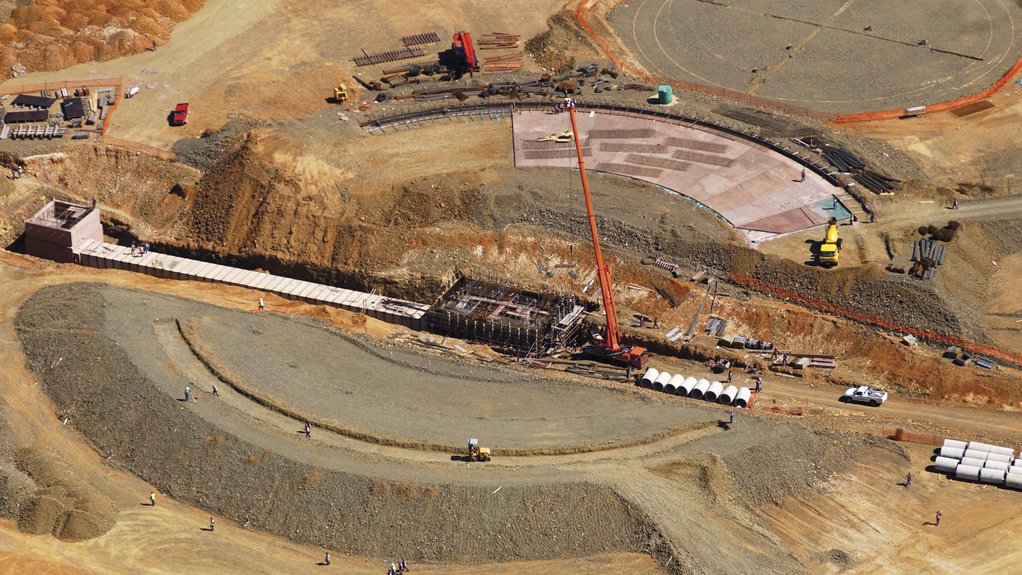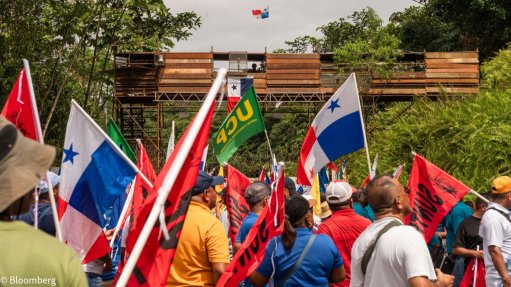Mines continue to drive sustainable value creation


ASSMANG KHUMANI Community-benefiting projects are associated with mining company Assmang’s Khumani iron-ore mine, located in the Northern Cape, South Africa
The African mining industry is increasingly focusing on generating as much value as possible from mining projects to benefit all mining stakeholders and strengthen its position as a sustainable contributor to the continent’s economies, says consulting engineer Aurecon resources client director Eduard Vorster.
In South Africa, the world’s seventh- largest and Africa’s top iron-ore producer, community-benefiting projects of note include mining company Assmang’s Northern Cape Khumani iron-ore mine’s, Olifantshoek bulk water project, with a construction value of R30-million, and 2.3 km Deben road, with a construction value of R8.1-million.
As the global mining industry begins to recover from the low point of the commodities cycle, Vorster notes that it is crucial that companies plan for the future, adding that those that have “real vision” have the power to enact substantial change in African communities by facilitating development.
“Inclusivity is being embraced as companies realise the large role that mining play in many African societies. Those companies that have the courage to seek and invest in and remain relevant in Africa, will thrive. Those who are too slow or cannot respond to investment opportunities may find themselves left behind.”
He notes that mining companies in Africa do well when they form partnerships with host economies.
There has recently been a stronger focus on providing stakeholder value, which traditionally has involved communities in which they operate conferring a social licence to operate.
Vorster outlines that, in South Africa, where sustainability and growth have long been expected from the mining sector, the third iteration of the Mining Charter was gazetted in June. This document includes some significant changes to the previous version of the charter and is undergoing significant debate.
The Charter, he adds, is being objected to in court by various industry stakeholders.
Vorster stresses that companies and consultants will need to “be more agile” when responding to the short-term changes that the new charter outlines and to work cooperatively with government.
“The Mining Charter enables stakeholders in the mining industry to be better informed about the changes in spatial planning and land use that affect the mining industry and to improve its position to ensure that mining activities are favourably accommodated in land-use planning legislation,” he suggests.
The Spatial Planning and Land Use Act, which provides a framework for spatial planning and land-use management in South Africa, together with South Africa’s Mine Closures Act, is also encouraging mining companies to develop specific plans to leave a sustainable legacy when the production life of a mining asset ends, explains Vorster.
“Closing a mine does not end its contribution to the community. At closing, the mining company needs to ensure the transition of the mine into a future venture that will continue to provide sustainable benefits for the community.”
He outlines that mining companies typically plan and build critical infrastructure and other amenities in the areas where their projects are located and also assist in developing accommodation for people who may not have had access to housing before.
It is, however, often easiest to demolish mining villages at the end of a mine’s life, rather than considering and working through the incorporation of such villages into municipal areas, Vorster explains.
“Retaining housing in these communities should form a significant part of governments’ plans, as, in doing so, the opportunity exists for mining companies and governments to partner and help fulfil the very real need for housing in Africa,” he advises.
Since 2007, iron-ore producer Kumba Iron Ore has spent R1.9-billion on constructing more than 4 200 homes for employees. No houses were built in 2015 and 2016, however, owing to restructuring activities, according to the company’s Sustainability Report 2016.Sustainable infrastructure is also a problem throughout Africa and many mines face logistical challenges when extracting ore and delivering the product to market.
“This is one of the reasons mines form partnerships and work closely with various consultants, service providers and logistics providers. This ultimately assists them in developing the mining infrastructure that will help add value to their businesses and, in turn, provide sustainability for surrounding communities.”
By partnering with the Department of Mineral Resources on Social Labour Plans, Kumba has been able to invest in infrastructure at local government level. For example, the Dingleton resettlement to Kathu extends beyond the provision of around 500 new homes. “The suburb has acquired new infrastructure in the form of well-constructed and maintained roads, well-lit streets, boundary fences, parks, a new water and sanitation system and a new electricity supply,” says Kumba’s report.Access to energy remains a significant challenge in Africa, with Vorster noting that, in South Africa, the challenge is predominantly the high cost of electricity, while in other parts of the continent the lack of transmission and distribution infrastructure is a significant obstacle.
In many cases, mines will, thus, either develop a power generation facility of their own through small-scale hydropower, solar or wind projects, or occasionally contribute towards the development of a State-owned, grid-based facility.
Waste streams generated during the production processes may also be used for energy generation at mines instead of sending it to a landfill; or heat produced during production processes can be redirected to generate power, before dissipating into the air.
In addition, some companies are also investing in repurposing the significant volumes of treated process water for use in wider applications in surrounding communities.
“Aurecon is eager to see a bigger emphasis on partnerships between government, mines and communities going forward, as this will ensure that mines become an integral part of larger success stories in Africa,” Vorster concludes.
Comments
Press Office
Announcements
What's On
Subscribe to improve your user experience...
Option 1 (equivalent of R125 a month):
Receive a weekly copy of Creamer Media's Engineering News & Mining Weekly magazine
(print copy for those in South Africa and e-magazine for those outside of South Africa)
Receive daily email newsletters
Access to full search results
Access archive of magazine back copies
Access to Projects in Progress
Access to ONE Research Report of your choice in PDF format
Option 2 (equivalent of R375 a month):
All benefits from Option 1
PLUS
Access to Creamer Media's Research Channel Africa for ALL Research Reports, in PDF format, on various industrial and mining sectors
including Electricity; Water; Energy Transition; Hydrogen; Roads, Rail and Ports; Coal; Gold; Platinum; Battery Metals; etc.
Already a subscriber?
Forgotten your password?
Receive weekly copy of Creamer Media's Engineering News & Mining Weekly magazine (print copy for those in South Africa and e-magazine for those outside of South Africa)
➕
Recieve daily email newsletters
➕
Access to full search results
➕
Access archive of magazine back copies
➕
Access to Projects in Progress
➕
Access to ONE Research Report of your choice in PDF format
RESEARCH CHANNEL AFRICA
R4500 (equivalent of R375 a month)
SUBSCRIBEAll benefits from Option 1
➕
Access to Creamer Media's Research Channel Africa for ALL Research Reports on various industrial and mining sectors, in PDF format, including on:
Electricity
➕
Water
➕
Energy Transition
➕
Hydrogen
➕
Roads, Rail and Ports
➕
Coal
➕
Gold
➕
Platinum
➕
Battery Metals
➕
etc.
Receive all benefits from Option 1 or Option 2 delivered to numerous people at your company
➕
Multiple User names and Passwords for simultaneous log-ins
➕
Intranet integration access to all in your organisation



















